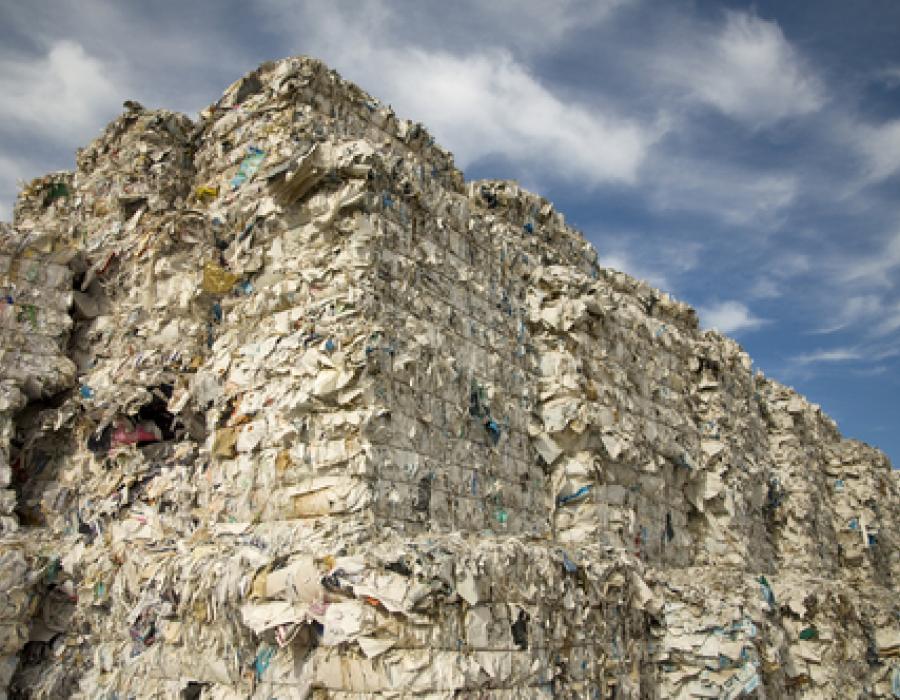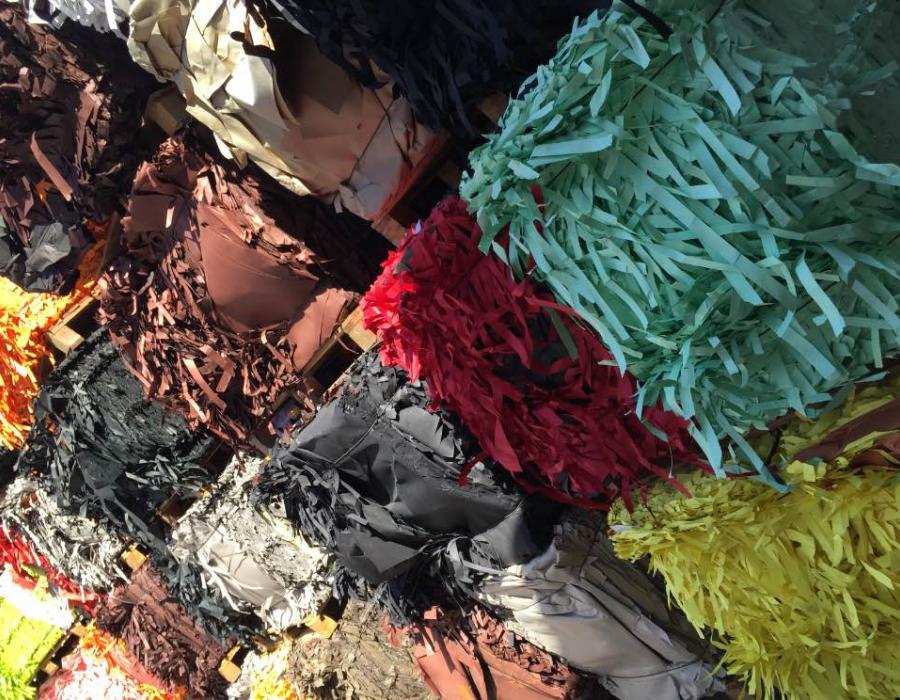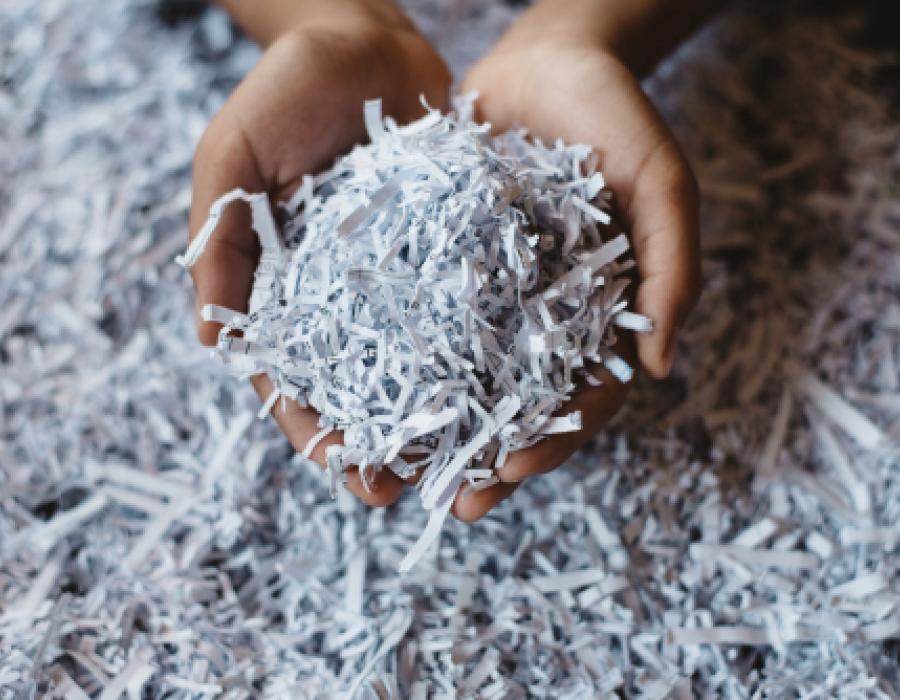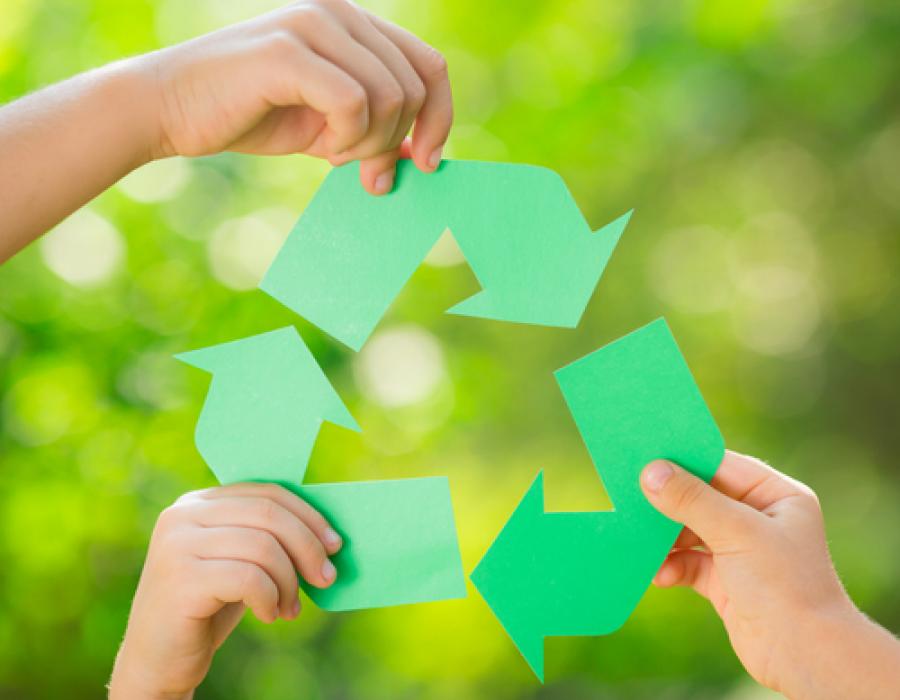One of the most important trends affecting publishing and packaging production is the ever-growing need to select environmentally-friendly materials. To a large extent, this ecodesign calls for recycled materials that leverage substrates that have already been used, making them suitable for use in new projects.
To begin with, it must be emphasised that for a paper to be regarded as recycled, the cellulose pulp used can never be virgin and must come from used material. Depending on its provenance and ultimate application, it will be submitted to a varying number of processes, depending on how clean it needs to be for the resulting recycled paper.

Origin of the fibre: pre- or post-consumption
Taking this premise into account, this concept can be divided into two major categories, depending on the origin of the paper paste: pre-consumer waste (also called post-industrial waste) or post-consumer waste; in other words, before or after it has been used, as the case may be. In the first option, it originates from a material which despite having been manufactured has never been used by the end consumer. For example, this group would comprise production overage or wastage, material unfit for production due to its colour or finish, or even obsolete products that are never sold and are therefore reused.
Conversely, the paste of post-consumer waste recycled paper originates from products that have been consumed, so they have already served their intended purpose. This means that they have already been in the hands of an end consumer and have been ruled out for disposal or recovery. In summary, this would be paper obtained from the blue container and it is the most heavily demanded recycled paper by the market.
Recycled fibre quality
The main issue is that this recycled fibre is low-quality, since it contains paint, prints or patterns, ink, etc., and must therefore be cleaned. Moreover, it contains a mixture of filler, short fibres and, if luck has it, long fibres too; as well as mechanical pulp from kraft paper or cardboard (which contains more impurities and is not pre-bleached), meaning that it is very difficult to ascertain the quality of post-consumer waste fibre.

For the above reasons, for recycled papers that call for high quality and good mechanical properties there is a type of recycled premium pulp from screened sources. This material is usually collected from printing facilities or offices and is higher-quality since it does not contain the remains of relatively unprocessed materials (such as kraft or cardboard) or processes that add dirt to the paper, such as laminates, prints or patterns, etc. The Guarro Casas recycled papers are manufactured with premium recycled pulp from screened origins to guarantee the best possible results in manipulation in packaging and publishing projects.

Bleaching treatment
Nevertheless, in order to use recycled paste, particularly from paper that has been used before, all the waste must be processed in order to recover the highest possible degree of purity. This means that optical brighteners must be applied to ensure that the paper is as white as possible and that it will subsequently be easier to process in the new production. In this regard, it should be mentioned that this material will never be 100%-white, as it is virtually impossible to remove all the remaining waste.
Despite this, recycled paper is always different, since it depends on the components and the colour remains from the original paste. One of the handicaps of this material is that the degree of waste it contains cannot be controlled, since it always depends on the provenance of the pulp, although stable technical characteristics are always guaranteed (meaning that, among other features, all manufactures have the same strength or the same colour).
In terms of colour, the usual range can be offered in its entirety, albeit with the limitations established by the base material. For example, in the case of whites, the pulp will render it impossible to reach certain degrees of lightness (pertaining to the CIELAB space) that can be achieved with virgin fibres.
What is clear is that recycled paper is necessary if we are to maintain sustainable production and take care of our planet and environment, that it is an increasingly more popular trend and more often than not even an industry requirement. Guarro Casas gives due consideration to all these factors and continues to conduct research to provide the best solutions in recycled materials in order to deliver the greatest possible quality and the best results in the most demanding projects.

Quality and use of recycled paper
However, and besides the foregoing, some papers have different recycling percentages. As a rule, in composition, the market does not accept less than 40%, because countries such as the United States mandate that the packaging used for all products contain this minimum amount of post-consumer waste. Therefore, and by way of example, Guarro Casas manufactures papers with a recycled content of 50% and even up to 100%.
On the other hand, this recycling percentage is not only imposed by specific legislations. Just as fibre type defines a paper’s functionality, the material’s degree of composition in terms of recycled fibres will determine the uses to which it can be put. Therefore, a paper with 50%-recycled fibres in which the other half contains long fibre will be just as strong, for example, as a Geltex (or in other words, stronger than a substrate half of which is short-fibre or even one with 100% short-fibre). This is evidently far superior to a 100% post-consumer waste recycled fibre.
With these characteristics, a paper made entirely of recycled pulp may withstand subsequent processing and surface treatment (for example, embossing, painting or coating) In terms of tensile strength, which is important in books, machine tensions or a box’s hinge movement, 100%-recycled paper will not deliver sufficient quality in terms of durability over time.
Therefore, and summarising, a totally-recycled paper may be used for the pages of a book; however, if we want to ensure that it can be used continually over time, for endpapers and for covers, we will need to choose a 50%-recycled paper, or any other percentage, provided that its mechanical properties are guaranteed.
